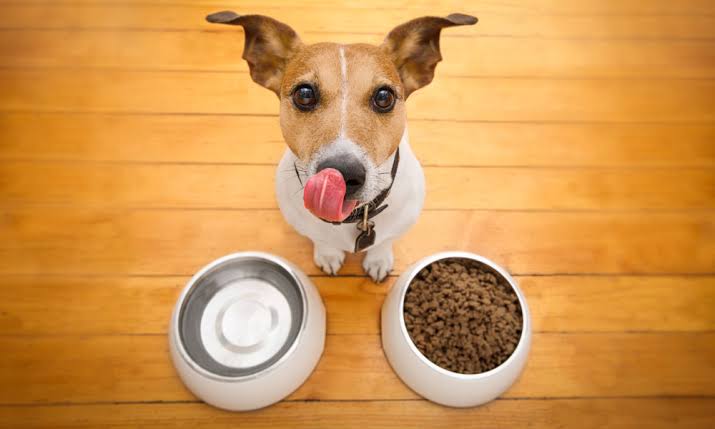USA Pets Food Info: A Guide to Choosing the Best Nutrition for Your Pets

When it comes to our pets, providing them with the best nutrition is a top priority. Just like us, our furry companions need a balanced diet to stay healthy, happy, and full of energy. But with the vast array of pet food options available, selecting the right one can be overwhelming. This guide, brought to you by USA Pets Food Info, will help you navigate the choices and find the best food for your beloved pets.
Understanding Your Pet’s Nutritional Needs
Every pet is unique, and their dietary requirements can vary based on their species, age, size, and activity level. Here’s a breakdown of what to consider:
1. Dogs
Dogs are omnivores, meaning they thrive on a balanced diet that includes proteins, carbohydrates, fats, vitamins, and minerals. When choosing dog food, consider factors like your dog’s breed, age, and any specific health concerns. Puppies, for example, need a diet rich in protein and fat to support their growth, while senior dogs may benefit from food that supports joint health.
2. Cats
Cats are obligate carnivores, meaning their diet must be high in animal-based proteins. Taurine, an essential amino acid found in meat, is crucial for their heart and eye health. When selecting cat food, prioritize high-quality protein sources and avoid fillers like corn and soy that offer little nutritional value.
3. Small Pets (Rabbits, Guinea Pigs, etc.)
Small pets like rabbits and guinea pigs have specific dietary needs that differ from dogs and cats. For example, rabbits require a diet high in fiber to support their digestive health, primarily sourced from hay. Guinea pigs need a diet rich in vitamin C, as they cannot produce this essential vitamin on their own.
Types of Pet Food: Which is Best?
Pet food comes in various forms, each with its own set of benefits. Here’s a look at the most common types:
1. Dry Food (Kibble)
Dry food is a popular choice for many pet owners due to its convenience and long shelf life. It’s especially beneficial for dogs and cats, as it helps maintain dental health by reducing plaque buildup. However, ensure that the kibble you choose is high in quality and doesn’t contain unnecessary fillers.
2. Wet Food (Canned)
Wet food is often more palatable for pets and can be an excellent option for picky eaters. It’s also a good source of hydration, particularly for cats, who may not drink enough water on their own. However, wet food can be more expensive and has a shorter shelf life once opened.
3. Raw Food
The raw food diet, also known as the BARF (Biologically Appropriate Raw Food) diet, has gained popularity among pet owners who want to feed their pets a more natural diet. This diet typically includes raw meat, bones, and organs, as well as fruits and vegetables. While some owners swear by its benefits, it’s important to consult with a veterinarian before switching to a raw food diet to ensure it meets your pet’s nutritional needs.
4. Homemade Food
Some pet owners prefer to prepare homemade meals for their pets, allowing for complete control over the ingredients. While this can be a healthy option, it requires careful planning to ensure that the meals are nutritionally balanced. Consulting with a veterinary nutritionist is recommended when opting for homemade pet food.
Reading Pet Food Labels: What to Look For
Pet food labels can be confusing, but understanding them is crucial for choosing the right food. Here are some key things to look for:
1. Ingredients
The first few ingredients listed should be high-quality protein sources like chicken, beef, or fish. Avoid foods that list fillers, such as corn, wheat, or soy, as primary ingredients.
2. AAFCO Statement
The Association of American Feed Control Officials (AAFCO) sets nutritional standards for pet food in the USA. Look for a statement on the packaging that indicates the food meets AAFCO standards for your pet’s life stage (e.g., “complete and balanced for adult dogs”).
3. Guaranteed Analysis
This section of the label provides information on the nutrient content of the food, including protein, fat, fiber, and moisture levels. Compare this analysis with your pet’s nutritional needs to ensure the food is appropriate.
Special Dietary Considerations
Some pets have specific dietary needs due to allergies, sensitivities, or medical conditions. In such cases, specialized diets, such as grain-free, hypoallergenic, or prescription diets, may be necessary. Always consult your veterinarian before making significant changes to your pet’s diet.
Conclusion
Choosing the right food for your pet is essential for their overall well-being. By understanding their nutritional needs, knowing the different types of pet food available, and learning how to read labels, you can make informed decisions that support your pet’s health and happiness. For more detailed information or personalized advice, feel free to contact us at [email protected]. Let USA Pets Food Ino be your trusted guide in providing the best nutrition for your pets.
